– Hello, everyone. Today we’re gonna be presenting on lessons from a multicultural garden at Allen Centennial Garden. My name is Reba Luiken. I’m the executive director at Allen Centennial, and this is Ryan Dostal, and he is our event and programs lead. So we’re gonna be talking a little bit about our experience with the multicultural garden last year. But before we dive into that, I’m gonna tell you a little story about my first visit to the garden. So this is Allen Centennial Garden, and my first visit there was after I had already been hired as the director in the spring of 2021. It was a weird time in COVID, so all of my interviewing happened virtually on a computer in my apartment. I got to sit at a desk for eight hours, not the most fun, but my first visit to the garden was an introduction into what this space was. It was May, so not everything was in bloom yet, but you’ll notice a few things from these snapshots.
One, there’s a lot of students and their families in the garden, because it was graduation weekend, so it was a relatively busy day in the garden, and the other thing that might be kind of funny is that it’s all pictures of our little French garden, and that’s for a couple reasons. One, I had already heard about the French garden and so I was noting it in particular, but second, I missed it the first walk through the garden. So I had been all the way around and I was like, “Wait, there was a French garden somewhere I was supposed to see, but I didn’t see it the first time around,” so I had to come back to it. And interestingly, it’s one of three cultural or historical gardens we have: the French, the Italian, and the English garden. So this is what I entered. The other thing that was going on in the garden when I arrived was, well, springtime. You can see the beautiful fringe tree, which is what I was actually taking a picture of here, but also our kitchen garden was full of chamomile, which the bees loved, but wasn’t really the best vegetable crop or the most diverse thing we could be offering there, and it wasn’t even worth taking a picture of apparently. I was just more excited about the bees in the tree. So this is what the garden looked like when I arrived, and this is what it looked like last fall. So it had been transformed into a multicultural garden featuring Hmong, a Three Sisters garden, and African diaspora plants, all of which we’re gonna talk about more this afternoon.
And we hosted our first harvest festival, which was a celebration for the produce of the garden. So we had a one-day festival with almost 1,000 people visiting, cultural performances, with storytelling from Hmong storytellers, traditional West African dance, and all manner of exciting elements to help us really experience what it would be like to be dependent on this garden and just so excited that it was able to feed us and our community. So our story is gonna continue. I will start with giving you just a bit more of an overview of Allen Centennial Garden. Then we’ll dive into some lessons that we learned over the course of the season, from trying out some new systems we weren’t familiar with, working with community partners, and then concluding with talking about next year’s plants and our plans for this year.
So Allen Centennial Garden is about two and a half acres on the campus of the University of Wisconsin-Madison. If you’re familiar with Babcock ice cream, we’re about halfway between there and the lake, right around the Agricultural Dean’s Residence. The garden opened in 1989, and its mission is to be an artful living laboratory and public botanical garden of the Horticulture Department at the University of Wisconsin-Madison. We’re an outdoor classroom for UW-Madison students, surrounding communities, and we work with visitors of all ages. Our team has three full-time staff members: myself, Ryan, and our horticulturalist, Isaac, and we also have interns that work with us seasonally, usually in the summer. The other really essential part of our team are our garden volunteers. We have over 50 active volunteers in the garden. They’re there on a weekly basis, sometimes more often. They help us with gardening and with events and everything in between, and so they’re just another essential part of our team. And this is the group that really made the garden come alive and helped with this transformation. So some other things or sort of the baseline information you need about how the garden was working. First, we were trying to really ramp up teaching in the garden.
So in the fall of 2021, we offered teaching fellowships, and one of the professors that took me up on this opportunity was a professor of a religious studies course. So they came in. I gave them a lecture about the history of planting seeds. We talked about some seed planting rituals from Southeast Asia, and then they helped us plant the seeds that would go into our kitchen garden. These are the African diasporic plants, things like collards and celosia, which we’ll talk more about later. One piece of vision that I brought into the garden was really wanting to make sure that everyone was able to meet their friends in the garden. So this is another picture I took on my first visit to the garden. It’s columbine. It’s one of my friends that I always like to say hello to when I visit the garden. And as gardeners, you might also have the same reaction. When you see a new garden, you’re always noticing their dahlias or their columbine or whatever plant that you connect with most, and it just always brings a smile to my face to see these. And so thinking about this garden, I wanted to make sure that as many people as possible could see their plant friends in the garden, whether they’re from Wisconsin, California, or somewhere halfway around the world. I wanted to try and represent as many of these cultures and have plants people could connect with. And that’s what we’ve been trying to do, make connections in the garden.
There was also a brand-new project coming up in the garden. We were ready to transform the kitchen garden into the Wyman Kitchen Garden. If you went out to Allen Centennial Garden today, you would see that this project is still in process, but it did inform some of the things that we chose to do. For example, there are three beds in this new kitchen garden and that’s why we chose to do three different sections. The other thing that’s a little misleading about this diagram is that there are circles and different shapes which look like plants, but there wasn’t actually a planting plan, so I had to think creatively about which plants were we actually gonna put into the garden. And we had one more opportunity, which was an already established connection and relationship with Lina Martin at the Native American Center for Health Professionals. So these are students who are at UW-Madison getting a doctorate in medicine or becoming nurses or working in a pharmacy, and they have a tradition of having a Three Sisters garden somewhere in the Madison area. But they had reached out to the garden to ask if they could plant something within our garden, and so we wanted to make that a reality, and that’s part of how this idea got off the ground. So the short answer to our question of how did this happen is it was one connection at a time, from meeting Lina to meeting our different Hmong partners, Chef Yusuf, and we’re gonna go into that a little more. So I’m gonna hand it over to Ryan now to talk about our first lesson. The systems you are comfortable with might not be the best ones for you to use.
– Thank you, Reba. So yeah, as you garden, I often think about, like, okay, all of the choices that you make. How do you acquire plants? What seeds do you select? What helps you evaluate a cultivar? Those are all systems, ideas about what is food. And so one of the really exciting things about this project was getting to kind of challenge those things for me personally and to do so with many of the really exciting community partners around town. As I started at Allen Centennial, Reba had put many of these partners in my connection, and it’s very fascinating that I met Chef Yusuf Bin-Rella in a number of places before I actually met him at Allen Centennial, which really speaks to his role in the community as an important leader in local food and agriculture. He’s been a chef for over 20 years and has so much experience as a culinary genealogist, a food historian, and has traveled to West Africa, and you can see his nonprofit there, Trade Roots, which he has founded in recent years to advance his mission. You meet him around town, he’s very generous with his time, and so he was the one getting us started and helping us select some of these crops and decide which ones we wanted to grow in this section of the garden. And so he kind of was, like, “Well, let’s start drafting our design. Let’s think about what we might do in this space,” which wasn’t able to get remodeled. And so we had, you know, a 20-by-40-foot square that we knew we were doing Three Sisters on one half, and you can see in that image there, the 3S, that’s the Three Sisters section.
But then on the other half, the sort of southern half, was where we were going to plant Yusuf’s Afro-diasporic crops, and you can see those listed there. And we didn’t want to create dissonance between the Three Sisters and the Afro-diasporic section in that, right, this Three Sisters is a sort of style that doesn’t follow rows, and so that forced us to think on our feet and to think about how can abundance be a little bit different? How might it look different? And so for me, as I grew up, my father was always, “Please, you must plant these in rows. Your rows are not very good.” And so you can see the other picture here of our corner garden, which is where I use a technique that my father and many of the farmers I trained under would say, “Well, go get the string, make your line work, and space the plants appropriately.” So we had to challenge that, and that was really fun. It was really fascinating because the questions you bring to the garden, the way you answer them, many of those questions are already answered as you go to draw it up. Those are all part of your background. And so it was really fun to kind of unlearn that and think about it, especially doing so with other community members, such as Chef Bin-Rella.
Thinking about how you even acquire plants. Do you go buy them? Do you raise them? Do you have a big tray? This was an amazing opportunity because, one, we grew them with students, and you can see how heavy students’ hands are when they’re handling the seed packet. [audience chuckling] We had an amazing abundance of collards and numerous other plants, and we had to kind of, like, get in there and split them and divide them several times. But what was also awesome is because we had so many plants growing in this system, we certainly had to share them and send them to different places. So some of these crops were used by Chef Bin-Rella at his Capitol city square garden. Some of them went to Badger Rock Farm. They all found their homes eventually at other sites, Troy Gardens, and that was a really rewarding and meaningful thing. It’s often that the abundance of gardens force us to find friends and neighbors, which I think is really rewarding.
This is the planting day. Chef Bin-Rella came out and led us in planting. One of the ideas that he brought with us and instilled in us as we went about it was that when you go to plant a vegetable garden or a garden you expect a harvest from, you must have generosity in you. And so we made an offering, a small offering of tobacco leaf, and then we proceeded to lay out the bed and get those plants nestled into the ground, get their roots going. You’ll also see that there’s a little bit of food in that picture. Chef Bin-Rella is very clear that when you’re planting, when you’re growing, when you’re gardening, you should be eating as well. And this is a very apt thing to do because it’s a fast way to win yourself over for the interns. You really get to their hearts quickly. [audience chuckling] He shared with us some egusi melon, which is a type of watermelon, nut butter, and Alan, one of the interns pictured there, he absolutely had a secret stash of graham crackers, which he busted out, and suddenly we had a picnic going on and it was quite wonderful. You can kind of see here how, right, that sort of played out, how we followed the design that we collectively drafted. And you can see the garden a couple weeks into going when those plants are finally, like, they’re getting going, their roots are starting, their leaves are reaching, and this is just before the garden started to turn on in late June.
One of the crops Yusuf selected was Lagos spinach. Now, I knew this crop as celosia, and what’s really remarkable about this is all my memories, right? I grew this for my wedding and oftentimes I’m the one, you know, stripping the leaves off of it, and now you have a great cut flower. But of course, this is a food crop, and Yusuf shared with us many of his stories while traveling in West Africa. This is an incredibly popular green there and it is the most popular one. It thrives in the heat of that climate and it is the perfect companion to collards because it brings in wasps, which eat the pests that beset our collard greens, but also because when our cooler-season greens start to slow down or bolt, lettuce, arugula, and others, celosia really starts running and really starts producing in a wonderful way. We mentioned we grew collards. We grew the Blue Vates variety, and another, Green Glaze, which were two important African-American varieties selected by Yusuf, and these were incredibly productive. I’ll talk a little bit about how much we were able to harvest in a couple of moments, but tremendous for the amount of space that we had.
Okra was another important crop, which Yusuf shared is just crucial to cuisine and it has that thickening agent, and so we definitely wanted to have that. What was more remarkable is, no matter where people came from, further south perhaps, or if they were native to Wisconsin, they often maybe commented, “Oh, I didn’t know you could grow that here.” And so that was a really awesome idea, to sort of push people’s boundaries. You can grow it here and we were quite successful. We would’ve maybe grown a few more plants, because it sort of slowly trickled in with how we were able to harvest. We never had quite as many as we wanted at any given time. We selected millet and southern pea, two important crops that were domesticated in Africa. Millet is an amazingly resilient grain. In our setting, we didn’t grow quite enough of it to harvest much of the grain, because the finches loved it. [audience chuckling] And they were constantly eating it, and, you know, we’re happy to feed our finches. They’re quite beautiful. Southern pea, of course, a nitrogen fixer and a really remarkable crop. You can see in this picture, some of the wasps are getting at that too, so we had that synergy going on as well and it would sort of run about.
Yusuf selected two specific varieties of tomatoes and peppers. The pepper he would share with us, about how important it was to Philadelphia caterers in the African-American community. This was the sort of secret Tabasco sauce pepper, and it was really fantastic that we were able to grow it and he was able to use it on a couple of occasions for cooking. Big picture, this was a fun thing that was a challenge for us, right? I mentioned celosia, Lagos spinach, and thinking about this with students was a lot of fun. We were growing these other varieties of celosia, which many of you may be familiar, the ornamental sorts, cristata, spicata, in our English garden and different other spaces in the garden, whereas we had the sort of edible type in our kitchen garden. And that was really rewarding, to kind of watch the light bulbs come on with students as they had these sort of aha moments, right? This is also food. We thought hard, too, about how we should be growing things, right? We learned that the okra was started way too early, and when we put it in the ground, it had all of these, like, roots and it was quite spindly. Next time, we’ll grow that directly from seed. Whereas the collards were perfect, despite, you know, we’ll coach those students a little better. And we had an incredibly abundant harvest in this space.
First off, we learned that you can only fit two trash bags of collards into the food shed, which is a space where UW students can go collect food at no cost. Our interns would go there after harvesting, and they’d say, “No, we’ve already put all the collards there.” And so then they would go out on University and Babcock and elsewhere and try to just give the greens to people and passers-by, and they learned about how many they could count on any individual taking on, and they always found more success when they shared some of Chef Bin-Rella’s recipes and cooking techniques. Young people are game, but they need a little bit of help to not be intimidated. The day we harvested for the Harvest Festival, which is one place these greens went, we collected 65 pounds of collards from this space, which was roughly 20 by 20 feet. That’s about 24 plants that were growing there, so they were indeed really thriving, and with the collaboration that we had going, it was very, very successful. So just amazing how much food you can grow in a small space and in a system different from what I was accustomed to, one that I wasn’t quite as familiar with. Reba’s gonna hop in and talk a little bit about our second lesson now.
– All right, so you’ve already had a bit of a preview of this lesson with all of the help we got from Yusuf and also the students that we worked with. But the second garden I’m gonna talk about today is our Hmong garden. So in particular, we grew what is traditionally called a Hmong chicken soup garden. This is a traditional planting of herbs used in a soup that Hmong folks often give to people after they give birth to help them recover. So all of these herbs are health-giving in different ways, just with general recovery, helping to deal with blood-clotting, and helping to produce milk, things like that, that someone who’s just given birth might need help with. So why did we choose to plant this kind of garden? Well, if you’ve been to a farmer’s market in Madison or anywhere in Wisconsin, you’ve likely seen Hmong farmers sharing their produce there, and that’s because they’re just such a large part of our community in Wisconsin. There’s over 58,000 Hmong Americans in Wisconsin, which is nearly 1% of Wisconsin residents. They’re the largest Asian American ethnic group, so when we’re thinking about which groups we wanna represent, that made a lot of sense, in addition to the agricultural connections. And then Wisconsin is just a place where a lot of Hmong folks have immigrated in comparison to other states. So a little bit behind Minnesota, and we’ll talk about that in a minute. But they were really big partners for what was happening in our garden.
All right, so all of our helpers that we had for this garden. The first one was some folks at Extension who connected me to Yimmuaj Yang, who is a community activist and works with Groundswell Conservancy. And what she was able to do is take me to the Southeast Asian Healing Center in Madison to meet with some Hmong elders so that I could ask them, “I wanna plant a Hmong garden. Which plants should I put here?” And she was also there to serve as our translator. I don’t speak Hmong, a lot of the elders don’t speak English very well, so she was able to put this question to them, to translate back the stories they were telling me. And what they said was, “Well, we grow bitter melon, we grow tomatoes, we grow lots of different things in our garden, but the thing that no one else grows in their garden are these Hmong herbs, so we really think that you should grow them because they are the thing that represent us the best.” And so they took those plants and they made a list for me. They put the Hmong name down. They gave me a picture so that I could take it shopping, because none of these were plants that I was familiar with, besides lemongrass, probably. That’s the most well-recognized one.
And I thought I was gonna have to go to Saint Paul to get these plants because there’s a Hmong market there. There aren’t any growers in Wisconsin right now that regularly produce these Hmong plants, and they can’t survive the winter. So every year, they’re tropical, you have to replant them as annuals. And so we went, were planning to go there, and then Nou Thao, who is part of the Community Garden Network in Dane County and works for Rooted, was like, “Hey, actually, there’s Hmong growers who are coming to Wisconsin. They’ll be in Madison in May. I’ll take you to the market. I’ll help you pick them out.” So Nou and her colleague Nicholas were also indispensable. They showed up at this Hmong market, they helped me match my plant list pictures to the actual plants there. And we actually ran into one of the elders that I had met with earlier and she became our personal shopper. So she looked at my list and she was like, “Well, actually you need these other ones also, so add those to your basket.” And Ryan had sent me with a list of plants and how many of different kinds he wanted because he had drawn out kind of a diagram of what the garden would look like, and she was like, “That’s too many plants. Don’t buy that many plants. They’re gonna get really big. You really only need one of each kind.” And I was like, “Okay, I have a big garden, so I’m gonna get more than one, but I’ll scale back my order. I’ll listen to you.” And so that was really fun and really helpful, and Ryan is gonna come up here in just a minute and tell you about what happened next, because basically I had a bag full of plants and my shopping list, and I left him on the back porch of the house on a Saturday morning, and Ryan came in on Saturday afternoon and he had to sort of sort through, because they weren’t labeled, and figure out which plant was which based on these pictures. But before we do that, I just wanna mention the Hmong Institute and Mai Zong Vue, who’s the chair of that board and was really helpful in gathering folks for our Harvest Festival, training them. She was one of our speakers and really shared how important these plants are with the community. So back to the plants; do you recognize these plants?
– Right, and so I spent most of the season getting to know these plants a little bit better, and as Reba was sharing, right, I, before encountering them, had done a lot of, I would say, due diligence. I thought it was due diligence, looking very closely at the Missouri Botanic Garden’s sort of dossiers for each plant, looking elsewhere, trying to get a sense of how big they would get, relative, what their conditions, what they liked. But as this lesson is, right, you can’t do it alone; you can’t do it without the plants. You can’t learn anything without the plant there in front of you and going through the season with it. And so here I had these wonderful plants and I had to work with my eyes, through that process of, right, recognizing the different leaves, noticing the different structures, noticing, okay, this is white Okinawa spinach, this is the other normal type, this is the white mugwort, this is the regular one, and going through all of the plants. And finally, I had the thing laid out on my cart and I thought I had all the groups together, and I started texting Reba and calling, and then, well, I had a couple wrong, so I swapped them, and finally, my eyes were adjusted and I was ready to proceed.
We planted them in our kitchen garden in this section, about 20 by 40 feet, and ultimately, this was where the sort of stressful part began, because the other thing you can’t do gardening without, right, is the weather and the conditions that you find different every year. And so you can see these pictures of the early garden and see how small things were. And so I’m always kind of, like, triaging, “Okay, these things are a little bit slower. Why are they a little bit slower?” You notice that maybe the leaves of the bloodleaf are curling back, and that that was a response that maybe they needed a little bit more shade. And so I was always going back to Nou and asking, “Okay, what’s happening here? Can you tell me more about this? How can we make this plant do a little bit better?” And one, she was very forgiving and gracious and told us that it had been a hard year for everyone because of how long the spring held on and how cool it was. And so many of these plants, of course, being adapted to tropical climates, thriving in heat, did not really kick on, did not really turn on and start filling out in that third picture until much later in late July. And so that was a relief, of course, but she did say, right, that the bloodleaf does prefer a little bit more shade, so next time, you know, we’ll shift, we’ll nestle it in, and get it to a different space so that it can be a little bit happier, and that’s all part of the process of learning that we were taking with our friends. Now, the other part that was really tricky was figuring out the labels and getting the labels right, and so Reba’s gonna talk to you a little bit about that. And this was constantly going back and forth, working with our interns, working with our partners, and then finally going to get the laser printer to rock and roll, and that is also a chore.
– Yes, the laser printer is a whole different story, which also required lots of help from volunteers, just generally speaking. Because we’re an educational garden, we like to have labels because we don’t always have staff there. There’s not always someone you can ask, “What is this plant? What do I do with it?” And so we have two different kinds of signs. One of them are what we call plant tags, which traditionally have the name of the plant in botanical Latin, the English common name, and then the plant family. And as you can see on the right-hand side of the screen here, these ones also have the Hmong name. Now, I don’t speak Hmong, no one on our team speaks Hmong, so trying to spell-check Hmong names is a challenge. It’s hard to know, right? We can’t even sound it out, because I don’t know, right, the different tones and how to nasalize these consonants and what they all mean. But we also ran into some other challenges. So as you can see, on the right-hand side, we didn’t always have an English common name. A lot of these plants are not really familiar in America or anywhere where English is the dominant language, so sometimes we just had to run with a botanical name, a Hmong name, and the plant family, which was all right. But sometimes we kind of were even in a deeper hole. So as you can see on the left side here, sometimes we just had a Hmong name to work with. So all of the Googling skills in the world just led us back to the one website, which was from the farm where we bought the plants, and all we had was the Hmong name. So we weren’t even able to connect it back to a botanical name or background information, which is especially interesting in this case, because when I was at the Hmong market, checking out and paying, the cashier specifically pointed out this plant to me and said, “This one is really good. You might even use it for some medicinal reasons that you might like,” and that was the one she was commenting on. But again, there was no general information about this.
We couldn’t find any of the, you know, academic papers to maybe corroborate all of this lived experience that the Hmong community has, and so that was kind of an interesting challenge. The other kind of signs we have in the garden are informational signs. So you might have seen the chalkboard signs in the Hmong garden, and they’ll be in the next picture again, but this is what one of them says. It’s basically talking about how we were using the plants. They’re medicinal, people use them to make themselves well, and it talked about a few of them. All right, so we continued to share these plants in ongoing ways with different members of the community, and Ryan’s gonna talk about that just briefly.
– Right, and so part of our goal with this was to maybe sort of, like, well, the plants are here, but send the plant materials outwards. And so for the Harvest Festival, as an example, we had a student fair where the Hmong American Student Association was able to harvest these plants and then present on them and show many of the visitors at the Harvest Festival how they might be used, prepared. And also, as I learned when harvesting these, because we did have UW Catering prepare a Hmong soup for our visitors to the Harvest Festival to taste, but as I was harvesting, I learned, right, how aromatic and wonderfully scented many of these herbs are. And of course, many may be familiar with lemongrass, but I found the Elsholtzia, this other type of mint, to be incredibly haunting in its sort of scent, and it was just amazing to be cutting and harvesting. And the catering, as they said, “Well, you have to get to three pounds,” and so you learn, right, how many cuts you have to make for each different one, and some of them, that’s much easier to do, others, that’s more difficult. And so you get that, again, in small sense, the lived experience that Reba was talking about, that Hmong elders possess in terms of really understanding these crops and really knowing why they’re so important. So we hope in future years to get them into others’ hands and pass them outward and have the students maybe be able to cook with them, have other events on campus, and just make people aware that they’re there, so folks can have that moment Reba talked about where you have that recognition, “This is mine,” and how important that is. So our next lesson is that you will learn by making mistakes, and we’ll get underway with that.
– So this section, we’re gonna talk about our Three Sisters garden, which features corn, bean, and squash. Just in case you’re not familiar with the Three Sisters, the corn is there in the center of the mound, providing a stalk, nice and tall for the beans to grow up. The beans are really great because they fix nitrogen, which provides fertilizer for the soil and helps to keep it regenerating and good for this year and for next year, which was really important for our squash, which were really aggressive, grew nice and wide, provided shade for the roots of the plants, helped with erosion and keeping in water, and also were really prolific, and we’ll come back to that later. So one thing that we learned throughout this process is that the seeds are really important. When we had the Harvest Festival, Jessika Greendeer, who is a Ho-Chunk seed keeper and works at a nonprofit in Minnesota working with Indigenous plants, had this really compelling talk about her relationship with seeds and all of the harms that Indigenous folks and their seeds have faced over the past, you know, few hundred years, having been displaced from Madison, maybe better known as Dejope. But our particular seeds also had a bit of a challenging story.
So the seeds that we were using had been used, gathered from a previous rendition of the Three Sisters garden that the Native American Center for Health Professionals had planted in 2019 and before, but because of the COVID pandemic, we had to put a pause on that, and so they hadn’t been grown in 2020, and we tried in 2021, but again, regulations just made it too difficult for the students to come out. And so in 2022, we went to plant the seeds, and because of working from home and offices shifting, they were kind of hard to find at first. But eventually, someone found them, and so we had the seeds available and then we went to try and plant them. And the first time we had a planting day set, it rained, and the second day, our Oneida seed keeper, who was gonna come and teach us how to plant wasn’t able to make it. And so we finally, on our third try, were able to plant it, and I started to get worried that maybe the seeds didn’t want to be planted in our garden. There’s a lot of Indigenous talk about, you know, asking permission from the seeds for harvesting, from the plants, all of these things, and we were starting to get concerned, especially because I learned that Ho-Chunk traditionally don’t plant Three Sisters gardens, so that’s not something that would have been traditional or ancestral here in Madison, but it is something that these seeds, which are Oneida, would’ve been traditional to. So we decided to go ahead with the garden, to plant it, because it was something that the Native American Center for Health Professionals was really committed to, and they have students in their program from across the United States, and this was something that was really familiar to a lot of them. So here is the planting day. Ryan’s gonna tell you a little more about that and a little more about some of our partners.
– Yeah, so that day, we had Jamie Betters of Oneida out and she was leading us in the planting process. And so in the center of each hill we had corn, and then, at the cardinal directions, Jamie instructed us to plant the beans, and then at the corresponding but turned to 90 degrees direction, so northwest, southwest, at those cardinal directions, we planted the squash. We had four mounds, but unfortunately, as Reba mentioned, the seeds being hard to find and come by, we only had two kernels of corn to grow. And so we put those into two, and then, necessity being the mother of all invention, Lina suggested with Jamie that perhaps we try to train some of the beans up okra, and that was attempted, and then we will also later on try to use sorghum, which is another stand-in for a very tall grass that beans might climb up. Now, the other reason that this was done is because for many varieties of corn, we wanted to prevent the possibility of them crossing. So we wanted to keep the two types of Oneida white corn pure, and so we didn’t want to just substitute any other random type of corn that might have been slightly more appropriate, but not right. We didn’t want that to happen.
So we finally got things planted, and the planting and the growing was underway. And you can see kind of here, things kind of getting in that phase right before they sort of, like, explode and grow and are kind of out of control. As everyone who’s grown squash knows, there’s that moment where you look and it’s still moving, and then you come back and it’s doubled or quadrupled. They’re such amazing plants and our interns had lots of opportunities to work with them. And it was also wonderful because it gave Lina an opportunity just to drop by, and I just have so many memories, as I’m having some coffee and she just stops by and we get to chat a little bit about the progress of the squash, which was the most successful sister in this configuration. So having only one stalk of corn that really thrived was a little bit of a setback. But as you can see here, we had a lot of success with the squash, and we learned a lot from the squash actually. And I would say one of our mistakes was not anticipating that we would need appropriate signage for this variety specifically.
So first off, that harvest amounted to probably over 60 pounds. We didn’t actually scale it, but it was an immense amount that Lina came with her student to harvest. And I like to talk about this picture as like, this is the car commercial, this is why you have this car, because squash. [audience chuckling] And so we had that harvest, and throughout the season, though, you can see that this is a type of squash that is very different from your average pumpkin, despite that it is a winter squash. It likes to put a thick rind on, it likes to stay on the vine for a long time, but for a lot of our visitors, they anticipated, given their background, it looks a lot like an immature zucchini or zucchini that someone, some negligent gardener at Allen Centennial had forgotten to harvest, and so this is where that sign that should have been made comes into play. And so Reba and I, in discussing, right, we had heard so many visitors come in and say, “These folks, they just aren’t harvesting their squash. What is going on at Allen Centennial?” And you can imagine that we finally, like, realized, “Okay, this is the last time we’re gonna hear about the squash,” and so we drafted a sign that we think addressed it and helped talk about, right, this is a specific type of squash and this is what it wants to do. And this was a really meaningful teaching opportunity as well for many of the students who came to the garden, because we could talk through that process, because many of them, and, really, everyone, is familiar with zucchini and what you expect to see, but you maybe don’t expect to see a pumpkin shaped quite like this. But of course, this is a wonderful variety and it doesn’t really need any seasoning. Chef Bin-Rella would actually tell us, right, that you can just cook it as-is with a little bit of salt and it will have wonderful flavor. It’s very sweet and delicious. So we had that opportunity. Lina was able to cook with it, and her students, and they had a nice meal and they also were able to save many of the seeds collected from it in that space. And then of course, we were able to have our Harvest Festival to celebrate all three of these spaces together, and Reba’s gonna talk a little bit about that.
– All right, so here are some images of the performers we had at our Harvest Festival. Again, we tried to generate performers that would connect to the gardens that we had hosted. So we have Mai Zong Vue, who’s speaking about her history with seeds and plants and just Hmong culture in general. We have Limanya, a West African dance troupe in Madison that was able to do some seed or harvest traditional dances, which was really fun, because the audience got to be involved and to participate. In the bottom right-hand corner is Jessika Greendeer, who is speaking and showing some of her seeds and her experience as a member of the Ho-Chunk tribe, and then also we have Justice Green on the other side, who was, with the help of some folks on campus, one of our later additions to make sure that we had a Ho-Chunk person who could do the opening for the festival. So we had all of these folks doing music, song. We had some dancers. Syrena Polish Folk Dancers from Milwaukee came. We had a Nordic fiddler, and we tried to get as much fun as we could in for all of our students. We had about 50% of participants being students, and then lots of families from the community, who got to enjoy things like making flower crowns. They got to reflect on their own traditional harvest holidays. So if you’re American, like me, and you’ve grown up in the Midwest, that’s probably Thanksgiving or maybe Halloween. So we got lots of pictures of pumpkins and turkeys, but also other wider-ranging things, like the lamps from Diwali, and just enjoying fall harvest traditions or thinking about visiting cemeteries. And this was just a really beautiful day and we’re excited to be able to do it again next year.
But I just wanna briefly thank all of our financial supporters. We had lots of grant support from the Humanities and the Wisconsin State Arts Board as well. All right, so we’re gonna roll now into our fourth lesson. This year’s plants are next year’s seeds. If you’ve ever planted something like celosia or amaranth, you might know that they come back again next year, so we’re looking forward to that, but we also got to harvest the seeds to share them, and Ryan’s gonna talk more about that later. But before we do, we had some seeding questions that we’re thinking about for the next year. So first, what does it mean to be a good community partner? We’ve worked with these folks, whether it’s Yusuf Bin-Rella or Mai Zong Vue, and Yusuf got to harvest collards and use them at lots of different community events around Madison. So we had what some people have said were the most beautiful collards in Madison, just because they were growing next to the celosia and the wasps were taking care of them all season. But what does this partnership look like in a longer term? Can we advocate and help people in their gardens? Can we help community gardeners with the knowledge that we’ve learned? What does this look like as we’re moving forward?
The second question. What is the best way to share the food that we grow? So we know how to put things in the food shed, but that’s only two bags of collards a week. So there’s a lot more food that was coming out of this garden and there are probably other ways we can share it, whether that’s with a local food pantry or collaborating with campus dining or working with another nonprofit around Madison. That’s something where we’re trying to figure out, how can we grow and also make sure that we’re growing in a way that’s culturally appropriate. So if we’re growing collards or celosia or something that’s less familiar to a general audience, can we make sure that those plants are getting into the hands of someone who’s really gonna be excited about meeting those needs? And this is something that a lot of folks are thinking about. So there’s specific initiatives, like for elder food boxes in the Native American community, that people are getting food that is familiar to them rather than, say, dairy, which they might be lactose intolerant, not be able to eat that, but that’s kind of the general food box, and so trying to help make sure that we’re contributing to culturally appropriate food systems.
Third, how can we make the gardens come alive with more programming? We had one really great harvest festival, but that’s only one day out of 365 days of the year. So how can we continue to invite student groups, maybe the Hmong American Student Association to have events in the garden, to give tours to specific groups, and really make sure that our signs, our communication, our tours, and everything that we do is connected back to the themes of inclusion and making sure that we’re honoring our partners. And finally, how will the gardens change over time? So we had the three gardens that we had last year, but should we have those same gardens every year? Should we have a Three Sisters garden every year, or is there a different style of Indigenous garden we might plant instead? We were talking a few weeks ago to Lina about this and we were considering, well, maybe we should plant in the Ho-Chunk style, or maybe every year we should plant slightly different plants that are relevant to one of her student’s communities or tribes, whether that’s Din or somewhere from the Southwest or maybe somewhere from New England, right? They come from a lot of different places. There’s a lot of different traditions within this realm. One thing we’re excited about doing this year is introducing a new Latinx or a Mesoamerican garden to include plants that are native to Central America, so we’re really looking forward to that, and also, again, thinking about, like, they grow corn there, but maybe there’s something else that we can showcase that’s specifically unique to them as well. All right, so our theme for the upcoming year is Seeds of Change, and Ryan is gonna talk for a little while about what kinds of seeds we’re talking about and how that might play out.
– Yeah, so we’re really excited just to get seeds into people’s hands. I think one of the more rewarding memories of the fall season was working with Shabazz Middle School students and having them come out, and then we had a whole bunch of celosia that we had harvested. We wanted them to sort it. But after sorting, and they were sort of, like, practicing science, right, how might they classify them, but after that, we asked them to use plates and just to gather the seed from them. And if you’ve ever harvested seed from celosia, you know that it sort of makes this wonderful popping sound and all the seeds spill out, and it lets you know that it’s ready. So that was a really rewarding experience, and whenever we got those seeds and those flowers into people’s hands, that sort of ensued, and we found that people really enjoy taking flowers and taking seeds home from the garden, and so we wanted to make that the central goal of how we think about what we do in 2023. We’ve worked with Badger Volunteers to go and collect seed around Madison. We’ve been to the Arboretum, we’ve been to Lakeshore Nature Preserve, and a few other sites, collecting seeds that we’re hoping to grow in our garden but also to share with the public, and also going through that process with the Badger Volunteers, just teaching a few students at a time how easy it is to collect seeds and how you can interact in this very personal way with the world around you.
We’ve worked and we are in position, excuse me, to take some of our seed saving and demonstrate at different community garden spots throughout the year. We’re going to have, like, set up things so that people can see, okay, how many plants would be a really good population to save seed from? How far away is actually ten feet, which is the recommended isolation distance for beans? And how can we just inspire people to not let perfection be the enemy of the good, right? You don’t have to save the perfect seed every time. You don’t have to keep that variety true. There is value just in gathering and planting and seeing what happens. I mean, that’s when many of the coolest varieties happen and you just don’t know. And so we’re really hoping to work with others and find ways to inspire people just to take that step, and then hopefully, if they’re moved, visit us at the Harvest Festival this year, where we will have a seed swap and we’ll be supported in that with Seed Savers Exchange and several other organizations who have collected a lot of seed, in addition to ours. And so we’ll just really be looking forward to finding people around town that may have saved seed or other varieties for generations, and they can come out, share some of their wisdom, swap some seeds, and have a really nice time with everyone in 2023. So that’s kind of what we’re looking at. And then I think Reba will have a few remarks to conclude, but thank you so much.
– Yes, so as Ryan mentioned, we’re excited to do the Harvest Festival again this fall. Mark September 30 on your calendar. Come out and join us to enjoy the music, the dancing, and hopefully some delicious food, and the seed exchange. So this is another thing that we kind of learned. We wanna have something at the beginning of the festival to get people there so they can enjoy a longer period of the day and be there for the beginning, and so we’re excited to be able to exchange seeds. And one thing that’s really important about exchanging seeds and having local seeds, just being able to have seeds when there’s a crisis on hand. You know, COVID was not exactly a seed-related crisis, but if you’re a gardener, you know it was really hard to get seeds that year. And so now, we’re all a little more excited about having our own seeds and being able to keep those. But it’s also a way to make sure you have a plant that’s adapted to your local space, and it’s also a way to connect to particular communities. So a lot of the seeds that we used in the garden are not things that you can go to the garden center and get because they’re particular varieties, like the fish peppers that are connecting to a particular community or group. And so we wanna be able to continue that tradition and to start to build more community connections, and that’s kind of the heart of this entire project, building one connection at a time, working together with community members, and trying to build something that will continue year after year. So I hope you’ll come out and visit the kitchen garden again this year and see what we’ve got growing, or perhaps even cooking in the garden. So thank you.
[audience applauding]
Search University Place Episodes
Related Stories from PBS Wisconsin's Blog

Donate to sign up. Activate and sign in to Passport. It's that easy to help PBS Wisconsin serve your community through media that educates, inspires, and entertains.
Make your membership gift today
Only for new users: Activate Passport using your code or email address
Already a member?
Look up my account
Need some help? Go to FAQ or visit PBS Passport Help
Need help accessing PBS Wisconsin anywhere?

Online Access | Platform & Device Access | Cable or Satellite Access | Over-The-Air Access
Visit Access Guide
Need help accessing PBS Wisconsin anywhere?

Visit Our
Live TV Access Guide
Online AccessPlatform & Device Access
Cable or Satellite Access
Over-The-Air Access
Visit Access Guide
 Passport
Passport


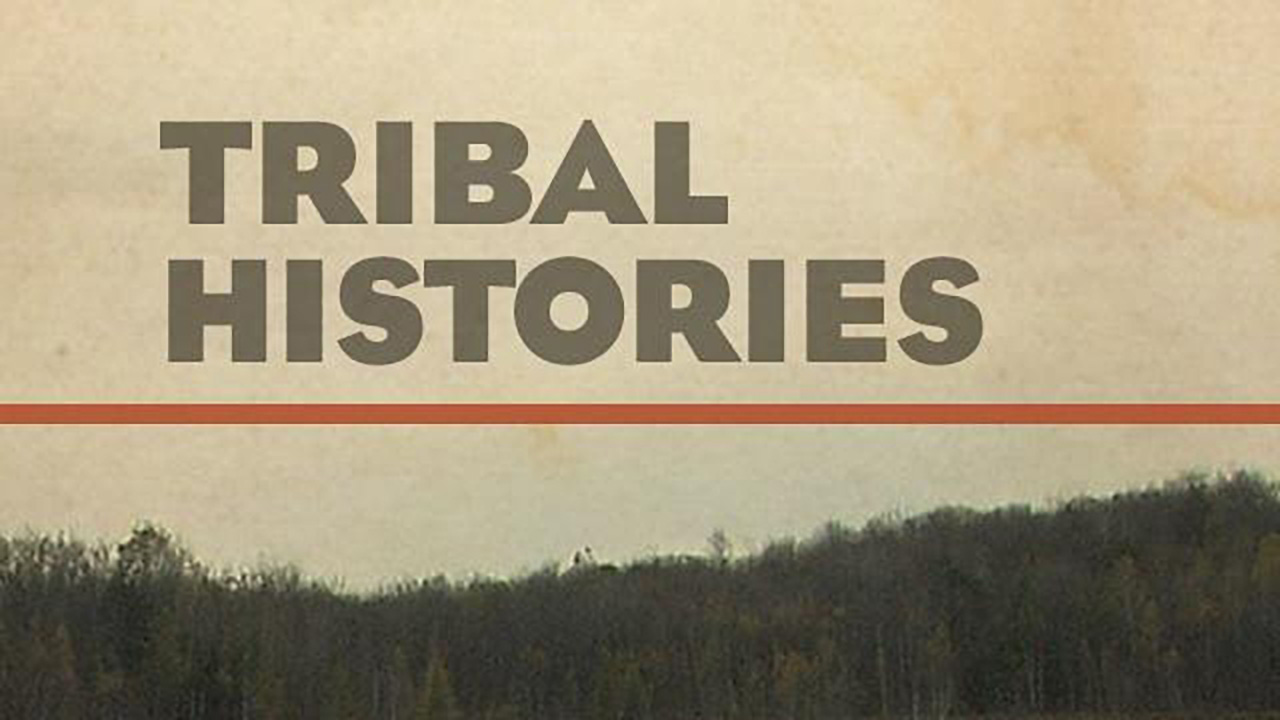
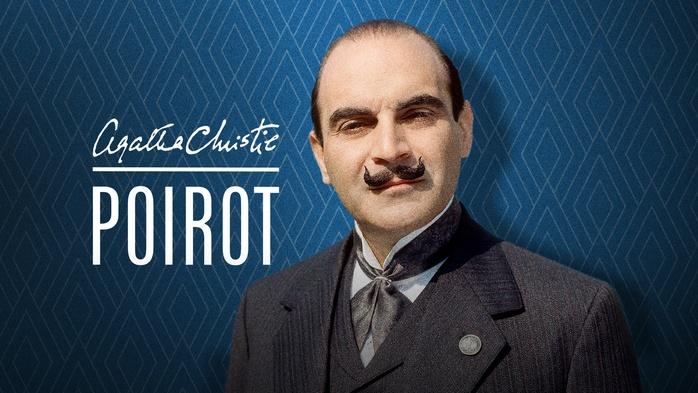




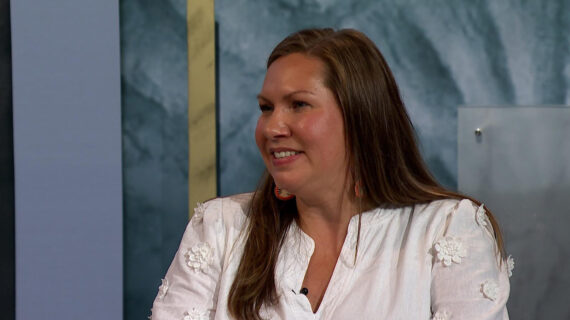
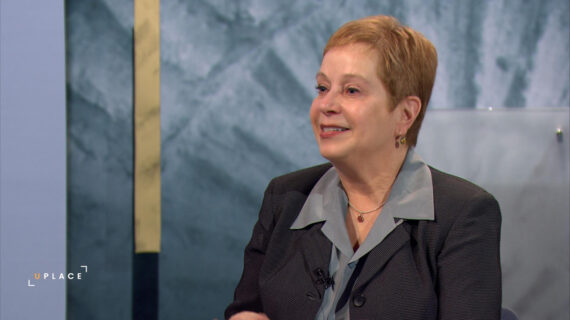
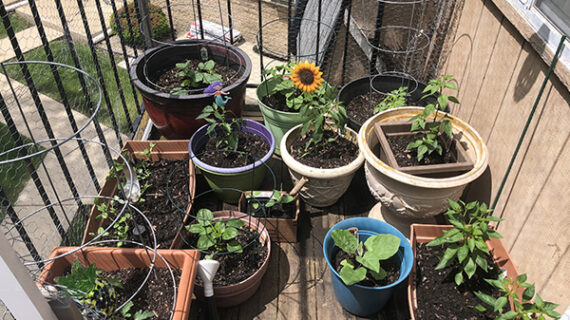
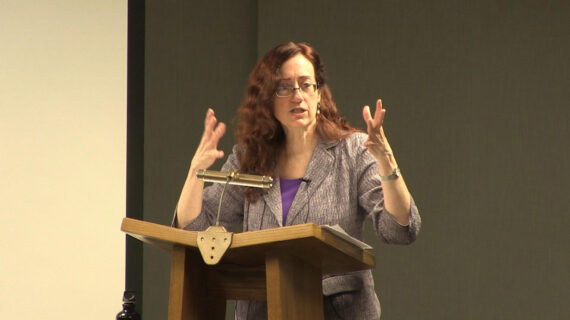
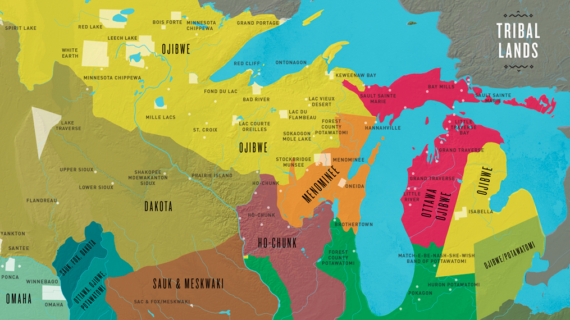
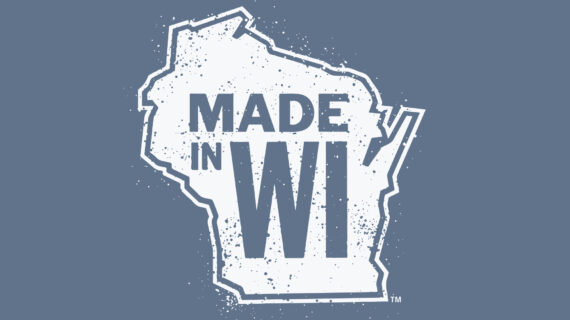
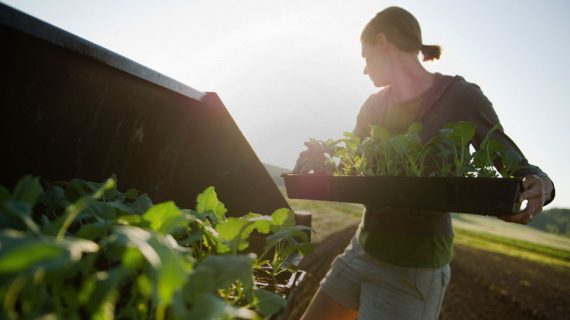
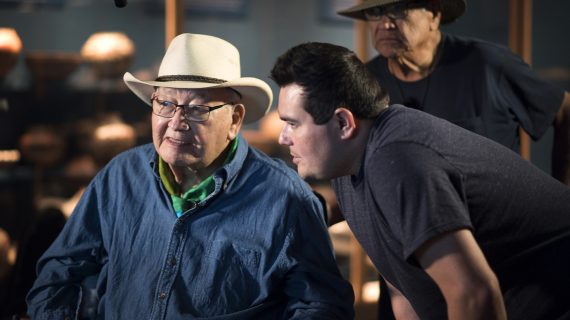


Follow Us